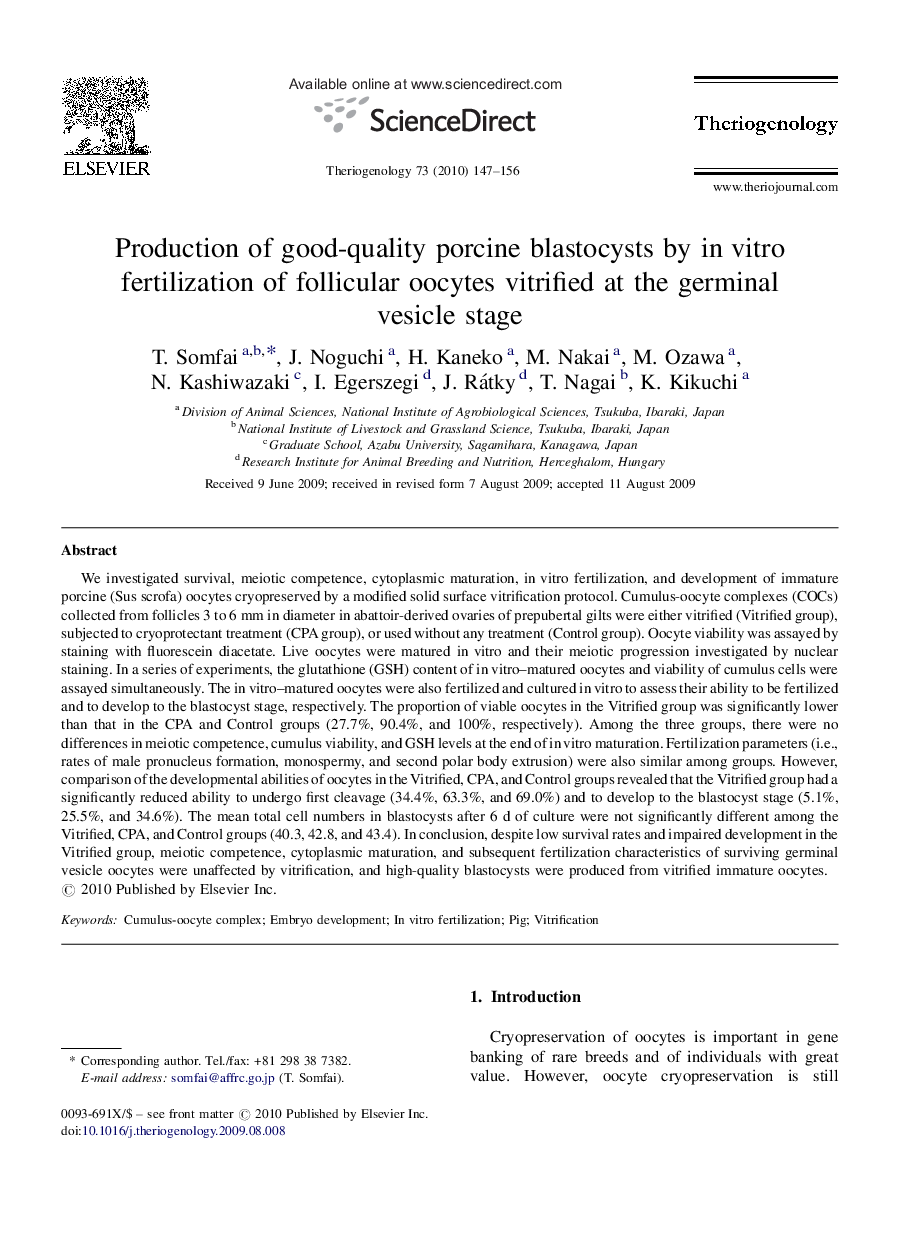| کد مقاله | کد نشریه | سال انتشار | مقاله انگلیسی | نسخه تمام متن |
|---|---|---|---|---|
| 2095923 | 1082143 | 2010 | 10 صفحه PDF | دانلود رایگان |

We investigated survival, meiotic competence, cytoplasmic maturation, in vitro fertilization, and development of immature porcine (Sus scrofa) oocytes cryopreserved by a modified solid surface vitrification protocol. Cumulus-oocyte complexes (COCs) collected from follicles 3 to 6 mm in diameter in abattoir-derived ovaries of prepubertal gilts were either vitrified (Vitrified group), subjected to cryoprotectant treatment (CPA group), or used without any treatment (Control group). Oocyte viability was assayed by staining with fluorescein diacetate. Live oocytes were matured in vitro and their meiotic progression investigated by nuclear staining. In a series of experiments, the glutathione (GSH) content of in vitro–matured oocytes and viability of cumulus cells were assayed simultaneously. The in vitro–matured oocytes were also fertilized and cultured in vitro to assess their ability to be fertilized and to develop to the blastocyst stage, respectively. The proportion of viable oocytes in the Vitrified group was significantly lower than that in the CPA and Control groups (27.7%, 90.4%, and 100%, respectively). Among the three groups, there were no differences in meiotic competence, cumulus viability, and GSH levels at the end of in vitro maturation. Fertilization parameters (i.e., rates of male pronucleus formation, monospermy, and second polar body extrusion) were also similar among groups. However, comparison of the developmental abilities of oocytes in the Vitrified, CPA, and Control groups revealed that the Vitrified group had a significantly reduced ability to undergo first cleavage (34.4%, 63.3%, and 69.0%) and to develop to the blastocyst stage (5.1%, 25.5%, and 34.6%). The mean total cell numbers in blastocysts after 6 d of culture were not significantly different among the Vitrified, CPA, and Control groups (40.3, 42.8, and 43.4). In conclusion, despite low survival rates and impaired development in the Vitrified group, meiotic competence, cytoplasmic maturation, and subsequent fertilization characteristics of surviving germinal vesicle oocytes were unaffected by vitrification, and high-quality blastocysts were produced from vitrified immature oocytes.
Journal: Theriogenology - Volume 73, Issue 2, 15 January 2010, Pages 147–156